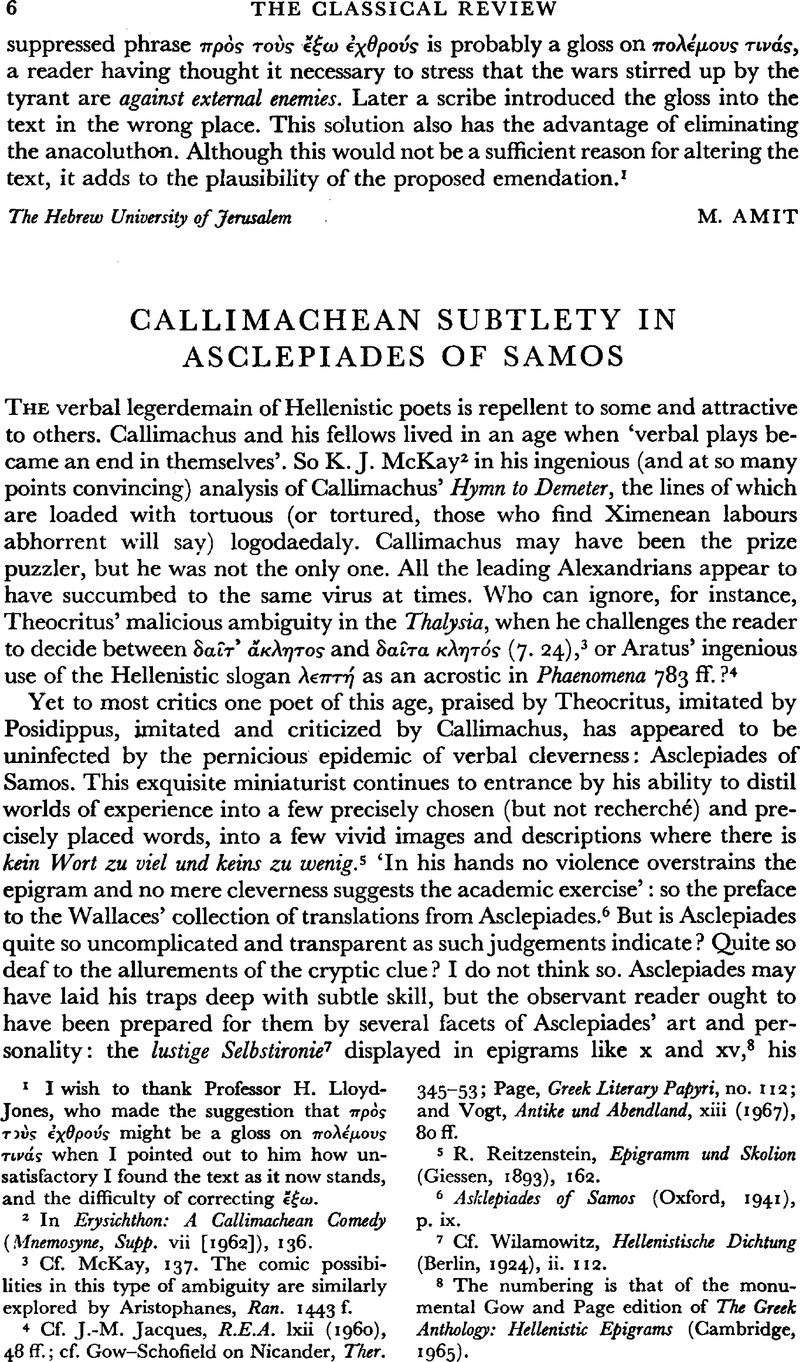Published online by Cambridge University Press: 27 February 2009

page 6 note 2 In Erysichthon: A Callimachean Comedy (Mnemosyne, Supp. vii [1962]), 136.Google Scholar
page 6 note 3 Cf. McKay, 137. The comic possibilities in this type of ambiguity are similarly explored by Aristophanes, Ran. 1443 f.
page 6 note 4 Cf. Jacques, J.-M., R.E.A. lxii (1960), 48 ff.Google Scholar; cf. Gow–Schofield on Nicander, Ther. 345–53; Page, Greek Literary Papyri, no. 112; and Vogt, , Antike und Abendland, xiii (1967), 80 ff.Google Scholar
page 6 note 5 Reitzenstein, R., Epigramm und Skolion (Giessen, 1893), 162.Google Scholar
page 6 note 6 Asklepiades of Samos (Oxford, 1941), p. ix.Google Scholar
page 6 note 7 Cf. Wilamowitz, , Helenistische Dichtung (Berlin, 1924), ii. 112.Google Scholar
page 6 note 8 The numbering is that of the monumental Gow, and Page, edition of The Greek Anthology: Hellenistic Epigrams (Cambridge, 1965).Google Scholar
page 7 note 1 Asclepiades' use of indirect or direct literary allusion deserves a paper of its own. Here one may briefly refer to the ironic echo (in i) of two images from Clytemnestra's fulsome list of adulations at Aesch. Agam. 899 and 901; the application of the defiant Prometheus' world-shattering protests in Aesch. P.V. 1043 ff. to a mere κωμαστ⋯ς in love (xi); the echoes of Homeric phraseology in the epigram on Ajax' tomb (xxix: cf. Ouvré, H., Quae fuerint dicendi genus ratioque metrica apud Asclepiaden Posidippum Hedylum [Diss. Paris, 1894], 53)Google Scholar; the remodelling of Alcaeus' σκ⋯λιον in xvi; or the use of marketing motifs from later Greek comedy in xxv and xxvi.
page 7 note 2 Cf. McKay, , The Poet at Play: Kallimachos, The Bath of Pallas (Mnemosyne, Supp. vi [1962], 62 ff.Google Scholar). McKay's two studies illuminate several other instances of this type of verbal ambiguity in the Hymns of Callimachus.
page 8 note 1 Gnomon xxxviii (1966), 22 f.Google Scholar